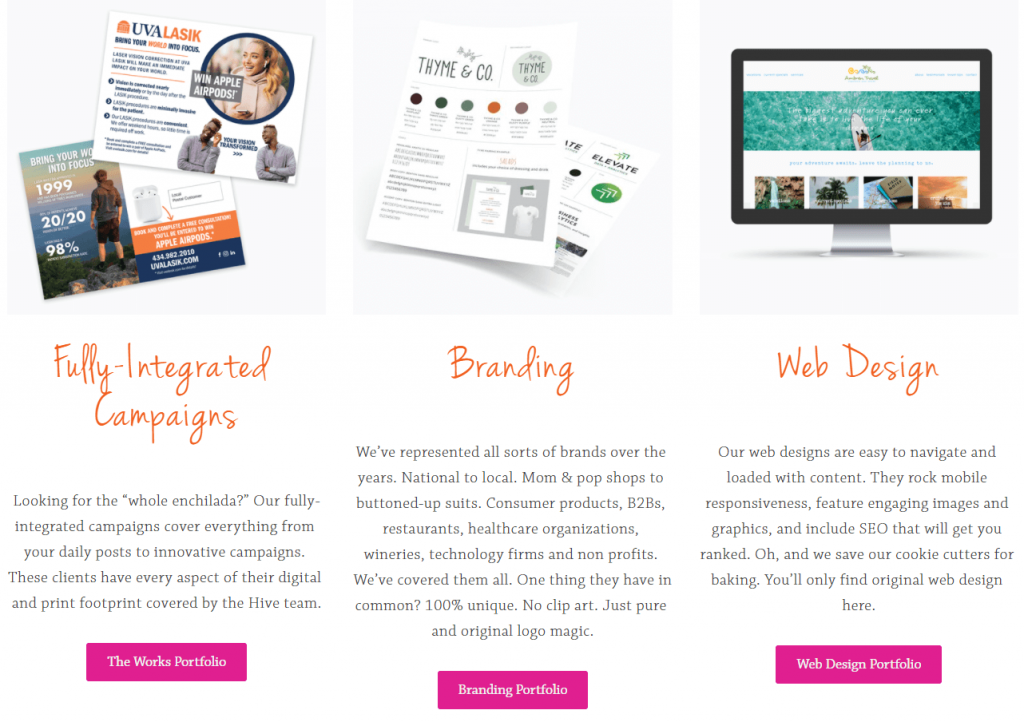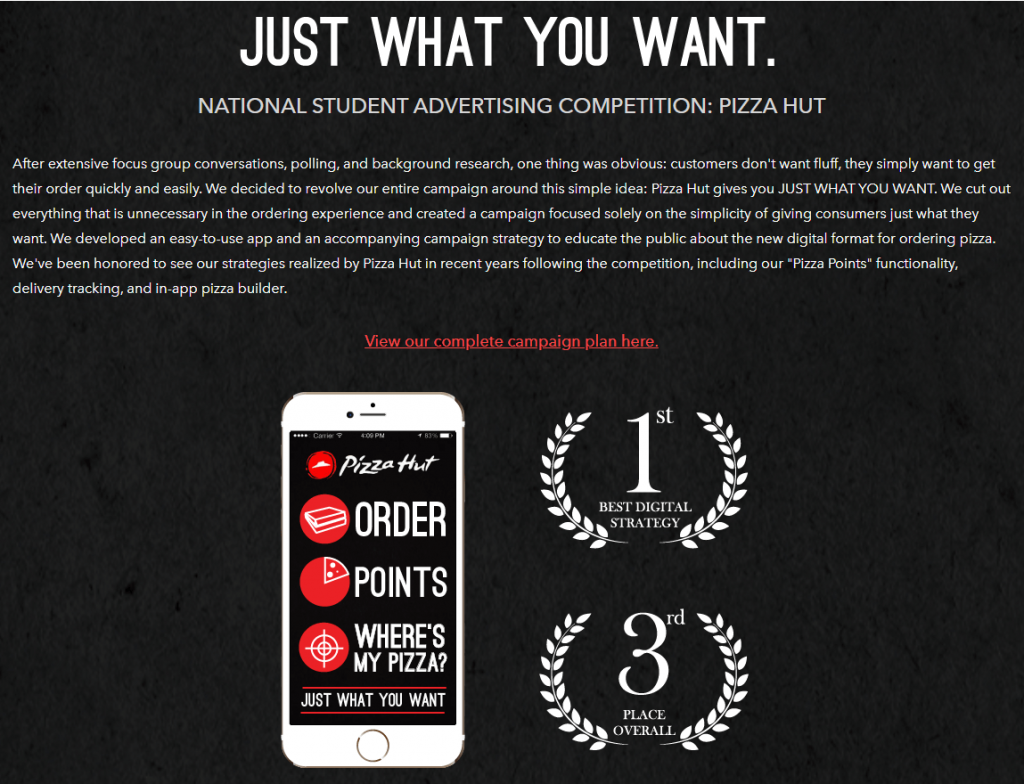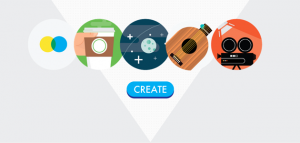The road to becoming a digital marketer has many different steps along the way, one of which is creating a way to showcase your talents and demonstrate your abilities to new customers and potential clients.
The best way to accomplish those goals is to create a digital marketing portfolio.
While you might typically think of a portfolio as something that only photographers, writers, and artists need, there are many different industries that benefit from having a compilation of your best work available to view publicly.
Digital marketing portfolios help you back up your claims to potential clients and recruiters and can help visualize to others what your skills entail.
- But how do you go about creating a digital marketing portfolio?
- What needs to be included in it?
- What steps should be taken to create a great portfolio that stands out from the competition?
In this article, we’ll answer those questions and provide you with some digital marketing portfolio examples to help inspire and guide your efforts.
- Why Do You Need a Marketing Portfolio?
- What Should Be Included in Your Digital Marketing Portfolio?
- How to Create a Marketing Portfolio
- Marketing Portfolio Examples
- Wrap Up
Why Do You Need a Marketing Portfolio?
A portfolio is a collection of materials or online page of materials that demonstrates your best accomplishments.
The portfolio is meant to be viewed by others so they can understand more about you and what you can do for them.
A marketing portfolio will showcase your skills as a professional and tell future employers or clients about your abilities as a digital marketer.
A marketing portfolio shows in a clear, visible manner exactly what you can do and how you do it. That makes hiring you a more compelling decision for others.
Think about it: a resume might list off some of your accomplishments and credentials, but without any proof to back up those claims, recruiters and clients are really going off of faith that you can do what you claim.
Most often, a marketing portfolio is a personal website where you can send people who are interested in learning more about your services, skills, and value.
This also helps you build a strong sense of professionalism and makes you appear more legitimate than your competition.
What Should Be Included in Your Digital Marketing Portfolio?
Like all portfolios, there are a few different key elements that you want to have represented in your portfolio to ensure it gives you the best impact on your efforts.
Let’s break down those elements and examine what should be included in your digital marketing portfolio.
About Section
The about section allows you to explain who you are and provides an overview of what you bring to the table.
It should also showcase your professional background and explain your journey.
You want to sell yourself as an asset, and an about section allows you to take control of what you want others to know about you when exploring your portfolio.
Samples and Case Studies
The main draw of a portfolio is the ability to showcase exactly what you’ve managed to accomplish with your skillset.
By giving samples and case studies, you can prove to viewers exactly what you can accomplish.
Case studies also help you give exact numbers and metrics on how you had an impact on other businesses while you were working to create digital marketing programs and pieces for them.
Testimonials
Testimonials, like reviews, are a great way to show that your past clients and employers approved of what you accomplished for them.
After all, word of mouth is the best promoter and we as people like to know that others have had positive experiences with someone.
Testimonials can help an outsider gain trust in you and your abilities without even having hired you yet.
Awards, Recognitions, & Certifications
A portfolio also provides you with many opportunities to showcase the awards, recognitions, and certifications you have gathered over the course of your career.
This, alongside testimonials, helps build trust in your abilities and your brand.
It also allows you to show off the different things you’ve won and brag about your abilities in a tasteful and professional way.
Resume
While you can also send a resume separately, including one on your portfolio site is a great way to let potential clients and employers know how you have spent your time and the trajectory of your career path.
This can help them get a better picture of you, gather references, and see your education and past jobs to get a more well-rounded view of you as an individual and as a digital marketer.
Contact Details
The most important thing to include in your portfolio is your contact information.
After all, you wouldn’t be able to get much work if someone loved what you could show in your portfolio but had no way to contact you to hire you!
Make your contact information easy to find and clearly have paths to your contact page, like multiple buttons and CTAs at the bottom of each page.
How to Create a Marketing Portfolio
Let’s take a look at the steps that you need to put in place in order to succeed in your marketing efforts.
1. Choose a Platform
Your marketing portfolio is going to be an online experience, so picking the right platform is key to getting started in your journey.
There are many different sites and platforms you can explore, so decide before you begin your journey exactly what you want to accomplish on your portfolio site.
Free sites like Wix and inexpensive sites like Squarespace can help you get started.
2. Design Strong Home and About Pages
The pages that are going to draw in the most people are your homepage, which everyone will first land on, and the about page where they can learn more about who you are as an individual.
Creating strong copy on these pages is going to help people connect with you as an individual and want to partner with you.
3. Make It Easy to Get in Touch
As stated above, the main goal of a marketing portfolio is to help people understand your work and be able to get in touch with you to hire you.
Make it super easy for others to find your contact information and get in touch.
Provide different types of contact information, like email, phone number, or even social media messaging platforms, so that potential clients and employers know how to talk to you quickly.
Marketing Portfolio Examples
Now that you know why a marketing portfolio is important and the steps that need to be taken in order to create one, let’s take a look at some marketing portfolio examples that can help inspire you and give you guidance when it comes to creating your own portfolio site.
Hive Creative Group

Hive Creative Group uses imagery that ties directly into their name to create a great sense of personality on their portfolio site.
The portfolio pages are broken down into clear sections that help visitors understand exactly what the group does and see the success of those efforts.
They also have clear contact information and fun animations to bring life to the page and highlight the branding and voice of the company.
Michael Antolak

Michael Antolak uses minimalist designs and simple yet effective branding and imagery to get his message across to viewers.
He also has a great scrolling feature on his site that helps you understand his experience quickly and find his case studies and work with ease.
He also includes interest headers on each page to add individualism and create a better experience.
Feeney Marketing

Feeney Marketing uses the portfolio to showcase the talents of each individual team member and allows viewers to get to know more about each person in the team.
That helps create a full image of a team of professionals and highlights the different expertise that each team member brings to the business as a whole.
The black and white photography mixed with colored case studies images also helps to highlight the effects that the group has.
Wrap Up
A digital marketing portfolio helps you stand out from others in your field and visibly demonstrates to potential employers and clients what your skills and areas of expertise are.
Crafting the perfect marketing portfolio requires you to pay attention to the different elements that need to be included and the steps that should be taken to make sure everything is covered.
Digital marketing portfolio examples can help you gather inspiration and take note of what a successful portfolio looks like.
This will also help you grow as a digital marketer by providing you with clear expectations of what long-term success can look like in the field.
Another great way to be inspired during your journey to becoming a digital marketer is to listen to the advice given to you by experts in the field.
To learn more about expert advice, check out our blog on the best marketing TED talks that can help you in your career grow!







